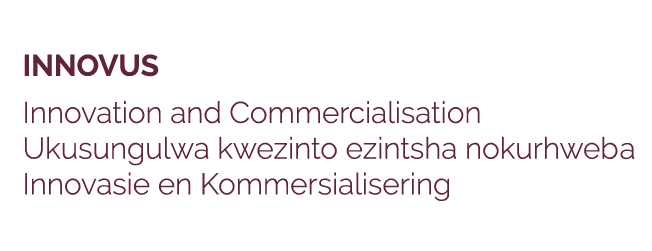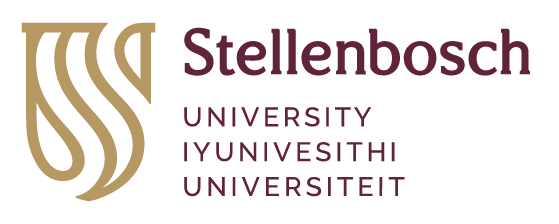A scholar. A gentleman. A visionary. A stalwart of the technology transfer world, and an amazing friend. It’s sad to see you go, but what you leave in your wake will benefit generations of innovators in the years to come.
Who is Prof Leopoldt van Huyssteen? Let’s touch on just a little of the storied history of this great man. Prof Leopoldt’s roots are planted in the agricultural world, with his early years spent on an apple-producing farm in Joubertina. As he grew, he accumulated a BScAgric, HonsBScAgric (cum laude), MScAgric (cum laude) and PhD(Agric) degrees from our University. During this time, he became fascinated with, and fairly proficient at translating research into technology, specifically in the viticultural and horticultural worlds and the technology developed from his research has also been a boon to the citrus, deciduous fruit and forestry industries. In 1992, two videos, based mainly on his research on soil management, won the international OIV (Office Internationale de la Vigne et du Vin) prize for the best audio-visual production for technology transfer. This depth of knowledge came in handy when, as the Dean of AgriSciences, the IP Protection Act came into being and it made him the logical choice to take up the reigns as Executive Director: Operations and Finance. In 2013 he was appointed as the first Chief Operating Officer of Stellenbosch University. After the unexpected passing of Prof Russel Botman in 2014, Leopoldt was appointed as Acting Rector and Vice-Chancellor, a position in which he served for nine months. He’s also one of the few people who have their own page on Wikipedia… Read More
‘A rose by any other name…’, some say. But SUDEM, now called GeoSmart, does not smell as good – it is even better. What was started in 2000 by Prof Adriaan van Niekerk, and already has a TIA Seed Fund Grant under their belt, has grown substantially, into a fully-fledged spin-out company.
A recap: SUDEM (or Stellenbosch University Digital Elevation Model) gives accurate (to 5m and 2m) terrestrial information to farmers, city planners and anyone else who needs to know the exact topography of a particular piece of land. The other DEMs that were around at the time were either too localised, or too low-resolution, to be completely useful, which is why SUDEM made so many waves in the industry. Where the rest failed, SUDEM succeeded, by aggregating all the various sources of information into one, high-resolution data-set, and the resulting picture allows us to plan our towns, disaster recovery, plantations and houses. Read More
Where we once used fear to guide how we guard ourselves against the ‘killers of the deep’, SharkSafe Barriers works for both sides, human and Selachii, in all their toothy glory, to the benefit of both.
Popular media likes to demonise these predators, and the reactive response is to do whatever is necessary to keep them from us. In most cases, this means gill nets, which reduce the number of shark attacks by reducing the amount of sharks. It’s a bit of a scorched-sea policy to protect our bathers and fishermen. Every year, thousands of sharks – the potentially dangerous ones, and the completely harmless ones – are tangled and suffocated so that we can get a bit of a frolic in the ocean come December time. Not to mention the turtles, dolphins, whales and other unlucky marine life that just happen to swim a little too close to our part of their environment. Another, more aggressive option is baited hooks, which I don’t think I need to explain. Lastly, there is the costly, and labour-intensive prophylactic method of exclusion nets, which are safer for the animals, but unrealistic for the aforementioned reasons (some municipalities, especially in Europe, spend up to €3m a year on beach safety programs with exclusion nets).
Wouldn’t it be great if there was something else we could do to keep our seas safe, without harming those that live there? Surely there’s something in nature we could use as inspiration? And maybe, we can try something that doesn’t cost so much that municipalities couldn’t afford it, even if they wanted to? Evidently, yes, to all three questions. Read More
As we mentioned in the previous newsletter, Innovus is growing meteorically. This is due to the number of submissions we receive from the world-class researchers and faculty that we have been blessed with at Stellenbosch University. Smart people equals a heap of very smart innovation. Understandably, it also equals a heap of work, so we have been reaching out to find the next shining stars within technology transfer. In no particular order, we would like to welcome some new faces to the family, all of whom bolster our business with their attitude, skills and passion.
Stefan #1, handsomely bearded as he is, was inducted into the Innovus family by our Technology Transfer Manager, William Cloete, with whom he had been co-authoring a paper (which became a patent application). This is after he received his PhD in Biochemistry and Molecular Biology, which transitioned into his post-doctoral work in the Department of Food Science. He is comfortable in the lab, where he spends much of his time, which is a huge benefit to us at Innovus. He will be helping some of the brilliant, but partially developed IP, which the inventors no longer have the time or budget to develop, reach their full potential. Because he has the expertise in the lab, he can do much of the work that needs doing himself. In his words, and metaphorically in line with his speciality, “I’ll make sure the pies are fully baked!”. His food science knowledge is already helping to accelerate our beloved S’Cool Beans onto the shelves of retailers, and to get the IP of a new lactose removal initiative protected in Europe. Joining our technology transfer office has opened up a new world for Stefan, as he gets first-hand experience of the world of business creation, little of which is seen from behind laboratory doors. Read More
‘Nebulous’ doesn’t do the complexity of technology transfer much justice; especially if you are a researcher or faculty member who has spent the last years of your life studying and developing that technology, not trying to commercialise it. To quote an annoying ear-worm, it really is ‘a whole new world’, and people are put-off by things they do not understand.
How do you disclose your innovation and its intellectual property? And who does that? What do you need to do in your first few weeks, and months? What does the selection, and then the development process look like? Do we licence the technology, or spin it out into a business? If it is successful, how are revenues shared? Where does the LaunchLab fit in? Read More
In our first eight years of existence, Innovus has progressed in leaps and bounds in the fields of innovation, technology transfer and commercialisation. Our impressive list of registered trademarks, licences, patent applications, disclosures and spin-out companies is testament to the hard work of our researchers, inventors and staff. Read More
Innovus, Stellenbosch University
|
15 De Beer Street
Stellenbosch
7600
South Africa
|
PO Box 3135
Matieland
7602
South Africa
|
|
t +27 (0) 21 808 3826
e info@innovus.co.za
e forms@sun.ac.za |

